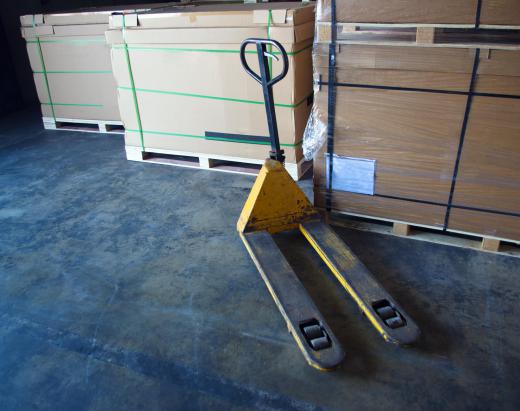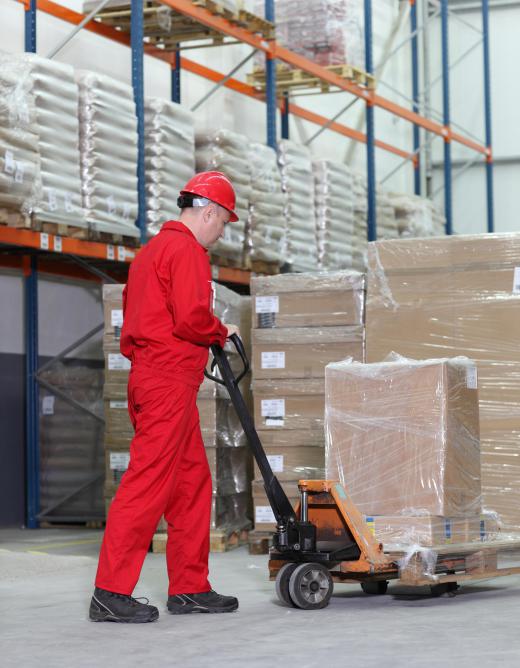Pallet handling is accomplished through many methods in a manufacturing facility. Pallet racks, forklifts, hand jacks and pallet trucks are just a few of the instruments used in the pallet handling regimen.
Pallets are a necessary component of most manufacturing. There are many methods and means of pallet handling in the modern work place. Most pallets are stacked orderly on large steel racks in a manufacturing facility. When needed, the pallet handling falls under the duties of the forklift personnel. Typically, the pallets are stacked high above the floor, requiring a forklift operator to set them on the floor in small stacks.

Once on the floor, the pallet handling task is left to personnel operating hand jacks. A hand jack is a dolly-like piece of equipment that has two long forks used to spear the pallet like the tangs on a fork lift. Once the operator has guided the tangs into the openings of the pallet, a few pumps of the handle cause the jack to lift the pallet off of the floor. This makes it easy for an operator to pull the pallet any place within the facility.

A pallet truck is much like a forklift in that a pallet is locked onto a set of forks protruding out the back of the machine. Often, workers fill customer orders from stock within the manufacturing facility. In this scenario, pallet handling becomes an essential skill to master. Typically, the worker drives the pallet truck up and down isles of merchandise in search of specific items on the customer's list. Once located, the item is placed on the pallet, and the operator begins the search for the next item on the customer's list.
While most pallets are the same dimensionally, occasionally non-standard smaller or larger pallets find their way into a facility. In order to achieve proper pallet handling methods, these odd pallets require specialized storage. Typically, a special dedicated storage location within the pallet racks is maintained for these particular pallets. Proper pallet handling requires removing these odd-ball pallets at the earliest possible opportunity.
Some of the larger manufacturing facilities incorporate an entire pallet handling system in the building. Specialized conveyors carry pallets off of the production floor and take them to a storage area on a separate floor. As a pallet is required, a message sent to a worker in the storage area results in a pallet being sent to the correct location via the conveyor system.
